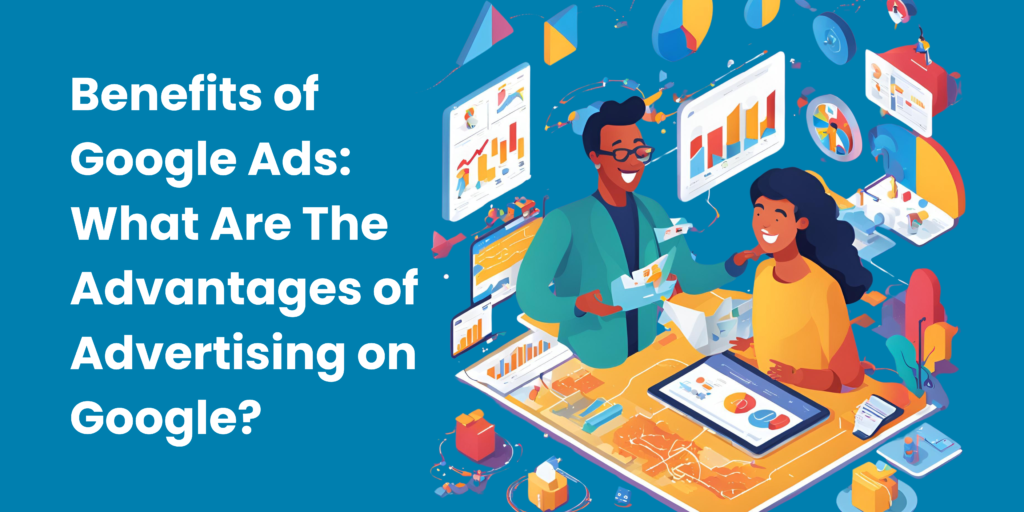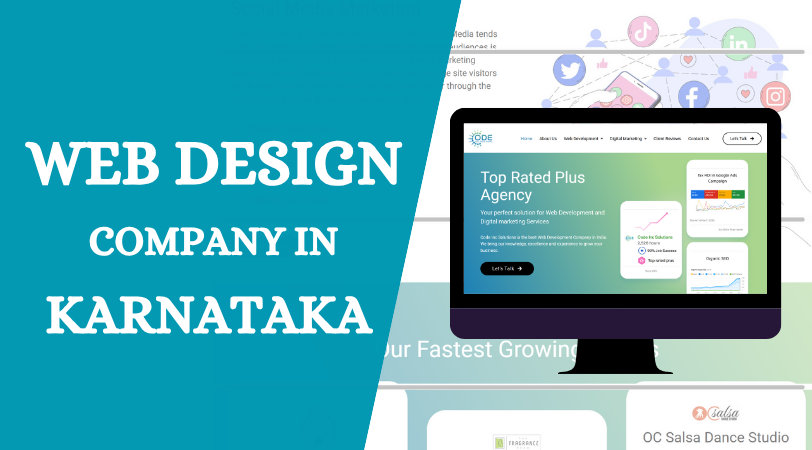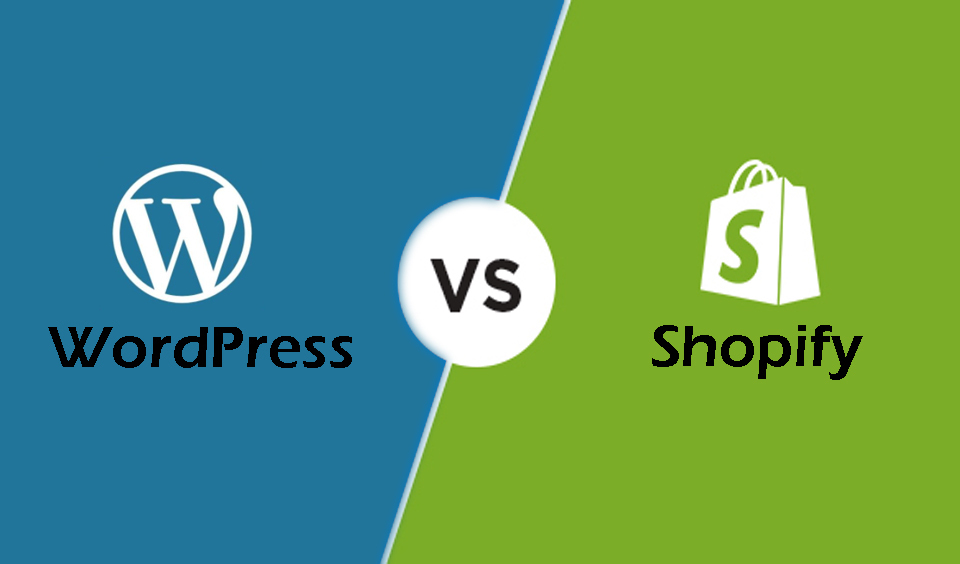This blog will teach you about Google Ads, its benefits, who may use it, and why you should advertise on Google.
What is Google Ads?
Google Ads is Google’s online advertising program. Google Adwords allows advertisers to place paid adverts on search engine results pages. You may use Google advertising to construct online paid marketing advertising to reach as many people as possible who are interested in the products and services you offer. The Google Ads run on Pay-Per-Click (PPC) Advertising.
Google Ads are used to market your business, help sell items or services, generate website traffic, and raise brand recognition among customers.
Google Ads Accounts are simply managed online, allowing you to create and alter your ad campaigns at any time, including the ad content, settings, and budget.
There is no need to spend the minimal amount; this allows you to define and control your budget. You may pick where your ad appears, establish a budget that works for you, and then simply track the effectiveness of your Google Ad.
Here’s an example of Google’s Search Engine Results Page (SERP). Paid Google Ads are divided into two parts: one above the organic (non-paid) results and one at the bottom of the search engine result page.
Ads or sponsored results are identified by the “Ad” label. Organic Results are the results that display behind the sponsored results or advertising (seen in red). I hope you now understand
Importance of Google Ads
Google Ads is a digital advertising network created by Google that allows businesses to show adverts on Google’s search engine and other partner websites. It provides businesses of all sizes with a strong and adaptable tool for efficiently marketing their products or services and reaching their target audience.
Here are some reasons why Google Ads is important:
-
Reach a large audience:
- Google is the world’s most popular search engine, with billions of searches made daily. Businesses may reach a large number of people by advertising on Google.
-
Targeted advertising:
- Google Ads offers extensive targeting capabilities that enable firms to reach specified demographics, regions, languages, and even interests. This degree of specificity guarantees that advertising are shown to the most appropriate audience, which increases the possibility of conversion.
-
Cost-effective:
- Google advertisements uses a pay-per-click (PPC) approach, which means that companies only pay when people click on their advertisements. This makes it a cost-effective advertising option since you only pay for genuine engagement with your adverts.
-
Measurable results:
- Google Ads has sophisticated tracking and reporting options, allowing businesses to measure the effectiveness of their campaigns in real time. You may monitor analytics like clicks, impressions, conversions, and ROI. This data assists firms in optimizing their adverts, targeting the proper keywords, and refining their tactics to obtain better results.
-
Flexibility and control:
- Google Ads gives companies complete control over their advertising campaigns. You may select a budget, alter bids, and control when and where your adverts appear. This adaptability allows organizations to tailor their advertising strategy based on their objectives, budget, and market conditions.
-
Remarketing opportunities:
- Google Ads has remarketing capabilities, which allow businesses to target people who have previously engaged with their website or expressed interest in their products or services. This strategy keeps your brand in front of potential buyers, which increases the likelihood of conversion.
-
Brand exposure and awareness:
- Even if consumers do not click on your advertisements, they are still exposed to your brand and messaging, which may help to increase brand awareness and recognition. This exposure can be advantageous in the long term since people may recall your brand when they are ready to make a purchase.
In short, Google Ads is significant because it offers businesses a highly targeted and cost-effective advertising platform for reaching a large audience, driving conversions, and tracking campaign effectiveness. It provides flexibility, control, and measurable outcomes, making it a vital tool for organizations looking to enhance their online presence and meet marketing goals.
Overview of Google Ads and How it works
Google Ads is an internet advertising network created by Google. It enables companies to generate and show advertisements across Google’s extensive network, which includes the Google search engine, partner websites, mobile applications, and YouTube.
Here’s an overview of how Google Ads works:
-
Account setup:
- To begin, businesses must create a Google Ads account. They may join up, enter their billing information, select campaign goals, and customize their targeting options.
-
Campaign creation:
- Businesses may construct advertising campaigns using their Google Ads account. Each campaign includes ad groups, keywords, and advertisements. Ad groups are a collection of similar keywords and advertising that target particular themes or subjects.
-
Keyword research:
- Businesses investigate and choose relevant terms that their target audience is likely to look for. These keywords specify when and where their advertisements will run.
-
Ad creation:
- Businesses design appealing advertising with headlines, descriptions, URLs, and relevant extensions such as call or location extensions. The objective is to attract and convince users to click on the advertisement.
-
Targeting choices:
- Google Ads offers a variety of targeting options to reach particular audiences. Businesses may target customers depending on their location, language, device, demographics, interests, and other criteria. This guarantees that advertisements are delivered to the most appropriate audience.
-
Bid management:
- Businesses establish bids for their advertising, which are the highest amount they are prepared to pay for each click (cost-per-click or CPC) or thousand impressions (cost-per-thousand impressions or CPM). Bids, together with quality variables, decide an ad’s position and visibility.
-
Ad auction:
- When a person submits a search query or visits a website, Google holds an ad auction to decide which advertisements to display. The auction determines the winning advertising based on parameters such as bid amount, ad quality, and predicted effect.
-
Ad ranking and display:
- Google rates the advertisements and decides where to post them on the search results page or partner websites based on the auction results. advertisements can show up as responsive advertisements, picture ads, video ads, or text-based ads across a variety of screens and platforms.
-
Performance monitoring:
- Google Ads offers comprehensive tracking and reporting capabilities to help you assess campaign performance. Businesses may track KPIs like clicks, impressions, conversions, click-through rates, and ROI. This data is used to optimize marketing and make educated decisions.
-
Optimization and refinement:
- Companies test various ad versions, modify bids, improve keywords, and make adjustments based on performance data in order to continuously optimize their campaigns. This iterative procedure maximizes outcomes and increases the efficacy of ads.
-
Budget management:
- To make sure they don’t go over their intended spending caps, businesses create a daily or monthly budget for their campaigns. When it comes to budget management, Google Ads offers flexibility and control.
In general, Google advertisements helps companies to contact their target audience, design advertisements that are specifically tailored to them, bid for ad placement, and monitor their success. It provides a strong advertising platform that aids companies in reaching their marketing objectives, boosting traffic, and increasing exposure.
Benefits of Google Ads
In fact, Google Ads provides a number of advantages that enhance return on investment (ROI), visibility, and accuracy of targeting.
Let’s explore these benefits in more detail:
-
Enhanced visibility:
- With billions of queries performed daily, Google is the most popular search engine in the world. Businesses can make sure their adverts show up prominently on search engine results pages (SERPs) and other pertinent websites in Google’s network by using Google adverts. Businesses are able to reach a larger audience and boost brand awareness thanks to this enhanced visibility.
-
Accurate targeting:
- Google Ads offers strong targeting features that let companies connect with their target market. Companies may target according to demographics, location, device, language, and even interests. By ensuring that advertisements are shown to the most relevant users, precision targeting raises the possibility of engagement and conversions.
-
Economical advertising:
- Google adverts uses a pay-per-click (PPC) business model, which means that companies only have to pay when a user clicks on their adverts. Because you only pay for real user involvement, it’s an affordable advertising option. Businesses also have control over their advertising spend since they may establish their budget and modify bids based on their financial situation.
-
Measurable outcomes:
- Google Ads has powerful tracking and reporting capabilities that let companies assess how well their ads are doing. Clicks, impressions, conversions, click-through rates, and cost per conversion are just a few of the metrics that businesses may monitor. Businesses may use this data to evaluate the success of their advertisements, make data-driven adjustments, and improve return on investment.
-
Fast results:
- Google Ads may produce exposure and traffic right away, in contrast to organic search engine optimization (SEO) activities that take time to show results. Ads can begin showing up on Google network websites and search results pages as soon as a campaign is set up, possibly increasing traffic and conversions right away.
-
Customization and testing of advertisements:
- Google advertisements gives companies the flexibility to design and modify their ads in accordance with their objectives and brand messaging. To maximize results, companies may test out various ad styles, headlines, descriptions, and calls to action. A/B testing may also be used to evaluate the efficacy of various ad versions and improve strategy in light of data-driven insights.
-
Opportunities for remarketing:
- Google Ads provides remarketing features that let companies target people who have already engaged with their website or expressed interest in their goods or services. Remarketing increases the likelihood of conversions, helps firms keep in touch with potential clients, and reinforces brand message.
-
Integration with other Google services:
- Google Ads easily connects with Google Analytics and other Google products and services. Through this connectivity, companies may monitor website performance, learn more about user behavior, and assess the results of their multichannel advertising campaigns.
In conclusion, Google Ads provides advantages such as enhanced visibility, accurate targeting, economical advertising, quantifiable consequences, speedy results, ad personalization, remarketing possibilities, and connection with other Google services. Businesses may improve their online visibility, draw in targeted visitors, and increase the return on their advertising spend by utilizing these benefits.
How to get started with Google Ads?
Take these actions to begin using Google Ads:
- Go to the Google Ads website (ads.google.com) and select “Start Now” or “Sign in” to create an account. You have the option of creating a new Google account especially for your advertising campaigns or logging in with an existing one.
-
Configure billing details:
- After logging in, you will be prompted to provide billing details, including your billing address and payment method. You’ll need this information to cover your advertising expenses.
-
Establish your campaign’s objectives:
- Setting specific goals is essential before starting your first campaign. Decide whether you want to increase website traffic, generate leads, drive sales, or raise brand awareness as your advertising goals.
-
Select the campaign’s parameters:
- To start your first campaign, click the “+ Campaign” button. Choose from Search Network, Display Network, Video, Shopping, or App campaigns, depending on your goals. Each kind offers a variety of advertising styles and fulfills distinct functions.
-
Selection of the audience and targeting:
- By choosing pertinent demographics, regions, languages, and gadgets, you may define your target audience. Additionally, you may reach certain interests, habits, or remarketing audiences by utilizing extensive targeting choices.
-
Decide on a budget:
- Establish your campaign’s daily or monthly budget. You may manage your advertising cost by setting a maximum budget using Google Ads. Depending on how well your campaign performs, you can subsequently modify your budget.
-
Select keywords:
- Find relevant keywords that your target market is likely to use when looking for goods or services similar to yours by conducting keyword research. To locate keywords with information on search volume and competitiveness, use tools such as Google Keyword Planner.
-
Make eye-catching advertisements:
- Create compelling ad copy that makes people want to click. Add captivating headlines, intriguing descriptions, and pertinent URLs. Make sure the target keywords and marketing goals are reflected in your advertisements.
-
Place bids:
- Choose your bidding approach, which establishes the price you are prepared to pay for impressions or clicks. Depending on your goals and budget, you may either set manual bids or select automatic bidding choices.
-
Track and improve:
- After your campaign is live, keep a close eye on its results. Pay attention to important indicators like conversions, click-through rates (CTRs), impressions, and clicks. By modifying bids, improving keywords, testing various ad types, and making other adjustments, you may use this data to enhance your campaign.
-
Monitor conversions:
- Use conversion monitoring to gauge how well your advertisements are generating desired activities, such form submissions, sign-ups, or purchases. Conversion monitoring offers insightful information about the return on investment of your advertising campaigns.
-
Keep improving your campaigns:
- Analyze the effectiveness of your campaigns on a regular basis and optimize them using data. To gain better results over time, experiment with alternative landing pages, targeting choices, bidding techniques, and ad variants.
Keep in mind that using Google Ads is only the first step. To get the best outcomes, it needs constant maintenance and adjustment. To increase the effectiveness of your advertising efforts, stay up to date on industry best practices, investigate Google Ads tools and tutorials, and continuously improve your tactics.
How to optimize Google ads for better ROI?
Use these tactics to maximize Google Ads’ return on investment (ROI):
-
Monitor and quantify conversions:
- Use conversion monitoring to precisely gauge the activities—like sales, leads, or sign-ups—that provide value to your company. You may use this information to determine which advertisements, campaigns, and keywords are generating the highest conversions and return on investment.
-
Clearly define your campaign’s objectives:
- Establish clear, quantifiable objectives for every campaign, whether they are to boost website traffic, lead generation, or sales. To make sure your improvements are targeted and successful, coordinate your efforts with these objectives.
-
Perform keyword research:
- Examine and refresh your list of keywords on a regular basis. Find the conversion-boosting high-performing keywords and eliminate the irrelevant or underperforming ones. To find fresh keyword opportunities and improve your targeting, use tools such as Google Keyword Planner.
-
Refine your targeting:
- Continuously evaluate your audience targeting options. Change demographics, regions, languages, or device choices to target the most appropriate audience for your products or services. To improve your campaigns, experiment with various targeting options.
-
Optimize the ad copy:
- Create interesting and relevant ad copy that will entice users to take action. Test alternative headlines, descriptions, and calls-to-action to see which variants result in higher click-through rates (CTRs) and conversions. A/B test your adverts to identify winning combinations.
-
Improve ad quality and relevance:
- Increase your Quality Score, which Google uses to determine the relevance and quality of your advertisements and keywords. Aim for high-quality scores by ensuring that your ad text is relevant to your target keywords, that your landing pages give a consistent user experience, and that your advertising delivers on their promises.
-
Use ad extensions:
- Make use of ad extensions such as call, sitelink, and location extensions. These extensions provide viewers more information and opportunity to interact with your adverts, which increases click-through rates and conversions.
-
Optimize bidding tactics:
- Evaluate your bidding strategies on a regular basis and alter them in response to campaign performance and goals. Experiment with automated bidding strategies such as Target CPA (cost-per-acquisition) or Target ROAS (return on ad spend) to increase conversions while keeping a profitable ROI.
-
Conduct A/B testing:
- Test several ad types, landing pages, and offers to see what works best for your target demographic. Split test your advertising to see which aspects work better. Use data-driven insights to improve your marketing.
-
Constantly track and improve:
- Examine your campaign’s performance indicators on a regular basis, including cost per conversion, click-through rates, and conversion rates. Determine patterns, regions for development, and possible areas for optimization. Make data-driven changes to boost ROI and campaign performance.
-
Optimizing landing pages:
- Make sure your landing pages meet the expectations established by your advertisements and offer a flawless customer experience. Optimize calls-to-action, landing page design, and content to boost conversions and reduce bounce rates.
-
Test new features and stay current:
- Follow the most recent changes and additions to Google Ads. Try out other ad formats, targeting choices, or campaign configurations to see if they improve your ROI and performance. Keep current with industry best practices and seek advice from Google’s resources and assistance.
Do not forget that optimization is a continuous process. Keep an eye on, evaluate, and modify your campaigns on a regular basis in light of performance information and insights. Your Google Ads campaigns may be as effective as possible if you keep upgrading your tactics and concentrate on increasing return on investment.
20 Reasons Why You Should Use Google Ads?
Here are 20 reasons for using Google for your advertising.
- Broad reach: With billions of queries made every day, Google is the most widely used search engine in the world, providing you with access to a sizable audience.
- Large user base: Because of Google’s large user population, you may connect with potential clients from a wide range of backgrounds, places, and interests.
- Targeted advertising: Google advertisements has sophisticated targeting features that let you customize your advertisements to target particular geographic areas, interests, and demographics.
- High intent audience: Google searchers are more likely to convert since they frequently have high intent and are actively seeking goods, services, or information relevant to their requirements.
- Cost-effective: Google advertising is affordable for companies of all sizes since it uses a pay-per-click (PPC) approach, which guarantees that you only pay when consumers interact with your advertising.
- Budget control: Since you have complete authority over your advertising expenditures, you may establish a daily or monthly budget that fits your objectives and financial situation.
- Flexible ad formats: You may select the ad type that works best for your company using Google advertisements’ selection of text, display, video, shopping, and app advertisements.
- Opportunities for remarketing: Google Ads gives you the ability to target consumers who have already engaged with your website, which enables you to get in touch with past visitors and increase conversions.
- Measurable outcomes: Google Ads offers extensive tracking and reporting capabilities that let you assess the effectiveness of your campaigns and obtain insightful knowledge about your ROI.
- Real-time optimization: By using real-time data, you can quickly modify your campaigns and optimize your targeting, keywords, and advertising to obtain the best possible results.
- Fast results: Google Ads, in contrast to organic search engine optimization (SEO), may increase website traffic and exposure right away, yielding results quickly.
- Targeting the increasing number of people who search and browse on smartphones and tablets is made possible by Google Ads’ ability to reach consumers on mobile devices.
- By choosing the days and hours that your ads should run, you can make sure that your target audience sees them when they are most likely to interact with them.
- Platform integration: Google Ads easily connects with other Google services, such as Google Analytics, giving you a comprehensive picture of your advertising campaigns and website performance.
- Extensions for improved exposure: Google Ads provides a number of ad extensions, including location, call, and sitelink extensions, which provide users more visibility and information.
- Geographic targeting: You may concentrate your advertising efforts where your clients are by focusing on particular geographic areas, whether they are local, national, or worldwide.
- Testing and optimization: To find out what works best for your audience, Google Ads lets you do A/B testing, experimenting with various ad versions, keywords, and landing pages.
- Brand exposure: Users see your brand name and messaging even if they choose not to click on your advertisements, which raises brand awareness and recognition.
- Competitive advantage: By making sure your company is seen by prospective clients while they are actively looking for goods or services, Google Ads may provide you with a competitive advantage.
- Professional assistance and resources: To help you get the most out of Google Ads, Google offers a wealth of resources, tutorials, and support, making sure you have the direction and help you require.
By leveraging the benefits of Google Ads, you can increase your online visibility, drive relevant traffic, and ultimately grow your business.
What Are The Benefits Of Google Ads?
If you have ever used Google to find goods or services you require, raise your hand. We may presume that both of your hands are raised even if we can’t see you!
Because of digitalization, more consumers investigate products and services online before making a purchase. As you might expect, they conduct their research using Google.
Your company is effectively nonexistent in the digital world if it is not listed on one of the several platforms. This is the only reason Google Ads is worth your time and money.
Let’s look at Advantages of Google Ads or Benefits of Advertising on Google for Business:
Google Ads Work Faster Than SEO
The main advantage of Google Ads (AdWords) is that it operates more quickly than SEO. Search engine marketing techniques like SEO and Google Ads are used to increase website traffic and lead generation. However, a firm may get immediate results and the most sought-after top position in search with a Google Ads campaign that is optimized.
When it comes to SEO, it might take years until one of your website pages appears in the highly sought-after top place for a wide term. It may never be seen by some firms. But if you start using Google AdWords, you have a far better chance of outperforming all the organic results on a search engine results page.
Google Ads is faster and more efficient for the following reasons:
- You can concentrate on more than one term.
- The Google Ads that show up at the top of the page become evident right away.
- The campaign can be turned on or off at any time.
Are you still hesitant to spend money on Google Ads? No issue! You will learn about several other advantages in this article.
Helps In Increasing Brand Awareness
When consumers hear Google Ads, they picture pay-per-click advertisements on search engine results pages (SERPs) that increase leads and website traffic. They are unaware, however, that Google Ads is far more flexible than that. Google Ads is a fantastic tool for promoting your business and increasing consumer knowledge of it. Because Google Ads places you at the top of the search results, everyone looking for the keywords you are targeting will see your brand and your content.
For instance, you wish to expand your brand locally and you own a salon. To reach the intended demographics and increase brand recognition, you can use display ads.
Helps in Increasing Leads & Customers
The ability to rapidly increase leads and consumers is one of the main advantages of Google advertising. Increasing the number of leads and consumers is one of the most popular objectives of business owners. One of the greatest tools for generating leads is Google Ads. Targeting those who are looking for what you have to offer is made possible by it.
With the use of this platform, you can continue to hone your searches so that only those who are interested in buying your goods or services are sent to your websites. This might be your company’s goods or services.
With Google Ads, you can access Google’s massive audience and get them to your website.
Your website may receive targeted leads for your company if your campaigns are configured correctly.
Here are the outcomes of how we have used Google Ads to assist our clients in growing their clientele and producing more leads:
Competitive Edge
The issue for you arises when someone looks for something associated with your goods or services online and you are not running advertisements but your rivals are. Almost immediately, you will lose business.
To get a competitive advantage, you must also be aware of your rivals’ company promotion tactics, advertising campaigns, and other tactics. Because of its openness, you can simply monitor this using Google Ads. Always strive to seize the chances that present themselves and differentiate yourself from the competition.
You now have an additional justification for using PPC or Google Ads for your company.
Google Ads Is A Flexible Marketing Platform
Any frequent user of Google Ads would tell you right away that it’s a versatile marketing tool. This indicates that enterprises of various sizes and kinds may use it.
Customizing campaigns to target particular internet users is simple. You may target users on various Google-owned websites where Google Ads are shown, as well as users on various devices and in various places.
Your budget may even be adjusted based on how much you are willing to spend on PPC advertising.
The example of establishing daily spending caps and budgets for the amount you wish to spend on clicks for particular keywords is shown below.
High Return On Investment
The greatest benefit of Google Ads is their high ROI. You only pay when a visitor clicks on your advertisement, in contrast to other marketing techniques. Once your Google Ads campaign is optimized, you might begin to see a high return on investment that other marketing tactics might not be able to provide. You must continuously test and monitor your campaigns to determine what will yield the best results. Because of its openness and the accessibility of the necessary information, Google Ads is the ideal platform for this.
You can see exactly what you are receiving out of the advertisements thanks to its quantitative return on investment.
You can even track how many clicks and impressions the advertisement is generating. This might be further contrasted with your revenue and sales.
Helps The Business To Know More About Their Markets
Google AdWords also helps businesses learn more about their target audiences. Being able to understand the thoughts of a company’s ideal clients is crucial. Dealing with clients and learning about their preferences is made easier if you have a clear understanding of your audience.
Now, you can only obtain a limited amount of information by employing conventional techniques like surveys and interviews.
Conversely, Google Ads generates data on the needs, habits, and purchasing patterns of its users. In addition, you may find out what keywords people use to find your website, where they are, what devices they use, what time of day they search, and other pertinent details that can be useful.
Better user experiences, goods, and services may be offered with the use of this information. In order to avoid spending money on advertising to those who are not interested in what you are giving, it also aids in improving your marketing plan.
Targeted Advertising in Google AdWords
You can target your audience by selecting particular interests using Google Ads or PPC Marketing. The three most popular methods for using Google Ads to target your audience are:
- Geographic Range: It is entirely up to you whether you choose to go worldwide or remain local. Your advertisement will only reach potential clients in the region you have selected if you have set a specified geographic location for it.
- Demographics: You may target potential clients based on their age, gender, economic level, and other characteristics by using demographic targeting.
- Keywords: When it comes to reaching the correct audience at the right moment, the wording of your advertisement is crucial. When selecting keywords, you should constantly consider the needs of your customers. Try to compile a list of possible keywords that you may use to search your company online because you are the one who knows it best.
For instance, if you own a tiny boutique clothing store, women in the neighborhood must be your target market. By choosing demographic variables such as age, income level, and keywords related to your company specialty, you may go one step further in determining your target audience.
Reach Your Marketing Goals
Ad campaigns may be tailored to meet your marketing objectives by utilizing various ad formats and features, such as including a clickable “call-to-action” button.
Here are some common marketing goals:
- A visitor takes action on your website
- Visits your store
- Call your business
- Install your mobile app
- Sign up or subscribe your newsletter
Bring Any Budget To The Table
Are you curious about the cost of running Google Ads? Don’t panic; you can still run Google Ads for your company and meet your marketing objectives without having a bigger budget.
You may witness immediate improvements in your sales with a monthly investment of Rs. 10,000.
The budget for your Google Ads campaigns is entirely within your control. Everything is under your control, including the campaign’s daily budget and the maximum bid you select for the advertisement. If an ad is doing well, you may spend more money on it to get more of the intended effects. Additionally, you may immediately cancel an ad or lower the ad spend if it isn’t doing well to avoid losing more money.
Pay Only When Visitor Clicks On Your Ad
You just have to pay when a visitor clicks on your ad when using Google advertisements or PPC advertisements. Your budget is up to you, and you only have to pay when someone engages with your advertisement—for example, by clicking on your text ad or seeing your video ad.
As a result, paying when someone clicks on your advertisement is worthwhile since they are more likely to be interested in what you have to offer.
Through Google AdWords, Advertise Locally Or Globally
You may contact potential users depending on their location with Google Ads.
This implies that if your target audience is nearby, you may locate the perfect client within a mile of your company; if not, you can target the entire nation, region, or world.
Are you still hesitant to use Google Ads? Then, since your rivals are using it and contacting potential clients before you do, you need to reconsider. Do you wish to pass up this chance?
Ads Competitor Targeting
If someone is interested in your competitor’s brand or service, you can display advertisements to them. The simplest method to steal your competitor’s leads, traffic, and sales is to target their keywords in your advertisements. All you need to do is bid on their terms and explain why a visitor should pick your business over your rival.
Google Ads assist you in connecting with consumers who are considering the goods or services offered by your rivals.
Google AdWords: Who Can Use It and Benefit from It?
Just because your buddy was successful with Google Ads doesn’t mean you should start utilizing it yourself. You should be aware of what kind of advertisements would be most effective for you and your company.
You should choose Google Ads for your business only if you answer yes to any of these questions:
- Do you have any internet followers?
- Do your rivals make internet advertising investments?
- Do online searches contain keywords related to your niche?
- Check Google for your keyword to see if any relevant results appear.
Therefore, you ought to use Google AdWords if you selected “yes” for any of them. Are you new to Google Ads? For training in digital marketing, get in touch with us.
Why Should Your Company Use Google Ads?
You should be asking “Why Not?” right now if you’re still wondering “Why should you use Google Ads?”
With varying budgets, advertising objectives, and target audiences, Google Ads offers something for companies of all shapes and sizes. Why don’t you dive in and see how much money you can generate in a sea of incessant searches?
Do you want to run ads on Google? To learn how to advertise on Google in a few simple steps, read this page.
Conclusion
We hope that we were able to explain to you the advantages of Google Ads for your companies. However, the path from theory to implementation is arduous and protracted. We are here if you want assistance from a group of Google Ads experts. Call Code Inc Solutions, the top PPC marketing firm in India, and we’ll assist you in using Google Ads to expand your company. Now check out our PPC packages!






